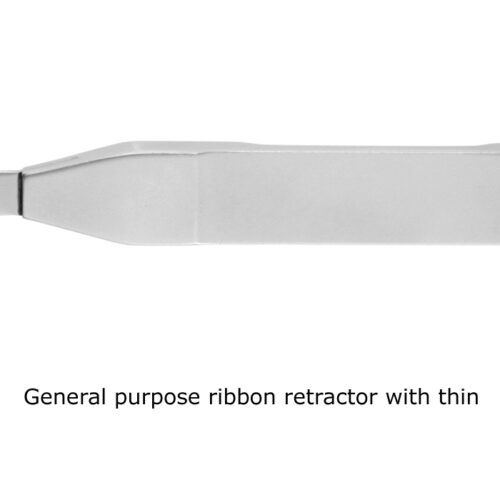Retractor Ribbon: A Vital Surgical Instrument for Optimal Exposure
Retractor Ribbon: A Vital Surgical Instrument for Optimal Exposure
Blog Article
In the realm of surgical instruments, retractors play a crucial role in providing surgeons with clear access to the surgical site. Among these, the retractor ribbon stands out for its versatility and effectiveness. This unique instrument is widely used across various surgical disciplines, including general surgery, orthopedic procedures, and complex neurosurgical operations. Its ability to hold back tissues, organs, or muscles while maintaining an unobstructed view makes it an indispensable tool in the operating room.

Understanding the Retractor Ribbon
The retractor ribbon, often referred to as a malleable or flexible retractor, is a flat, ribbon-shaped surgical tool crafted from high-quality stainless steel. Its defining feature is its malleability, allowing surgeons to bend and shape it according to the specific requirements of the procedure. This adaptability makes it highly effective in surgeries where irregular anatomical structures or deep cavities are involved.
The retractor ribbon’s smooth edges and flat design minimize the risk of tissue damage or trauma during the procedure. It provides surgeons with the ability to gently retract tissues while protecting delicate structures. Whether used for abdominal surgeries, thoracic procedures, or spinal operations, this instrument ensures precision and safety.
Key Features and Benefits
One of the standout features of the retractor ribbon is its ability to conform to various shapes and angles, ensuring optimal exposure in challenging surgical areas. This flexibility is particularly valuable in procedures that require access to confined spaces or deep cavities, such as liver resections or spinal fusions. Additionally, the instrument is available in different widths and lengths, allowing surgeons to select the appropriate size for the procedure at hand.
Another significant advantage of the retractor ribbon is its ease of sterilization. Made from durable, corrosion-resistant materials, it withstands repeated sterilization cycles without compromising its integrity or performance. This ensures that the instrument remains a reliable asset in the surgical toolkit over the long term.
Applications Across Specialties
The retractor ribbon’s versatility extends across numerous surgical specialties. In general surgery, it is commonly used to retract organs and tissues during abdominal operations, providing a clear view of the operative field. In neurosurgery, it aids in gently holding back delicate neural structures, ensuring precise and safe access to the target area. Orthopedic surgeons also utilize this instrument to retract muscles or soft tissues during procedures such as joint replacements or fracture repairs.
Its adaptability and reliability make it an essential tool not only for experienced surgeons but also for trainees. The retractor ribbon serves as a practical solution in situations where conventional retractors may fall short.
Conclusion
The retractor ribbon is a prime example of how innovation in surgical instruments can enhance procedural efficiency and patient outcomes. Its flexible design, combined with durability and ease of use, makes it a preferred choice for surgeons across multiple specialties. As medical technology continues to advance, instruments like the retractor ribbon will remain a cornerstone in achieving precision and excellence in the operating room. For healthcare professionals, investing in high-quality surgical instruments, such as the retractor ribbon, is crucial to ensuring successful outcomes and optimal patient care. Report this page